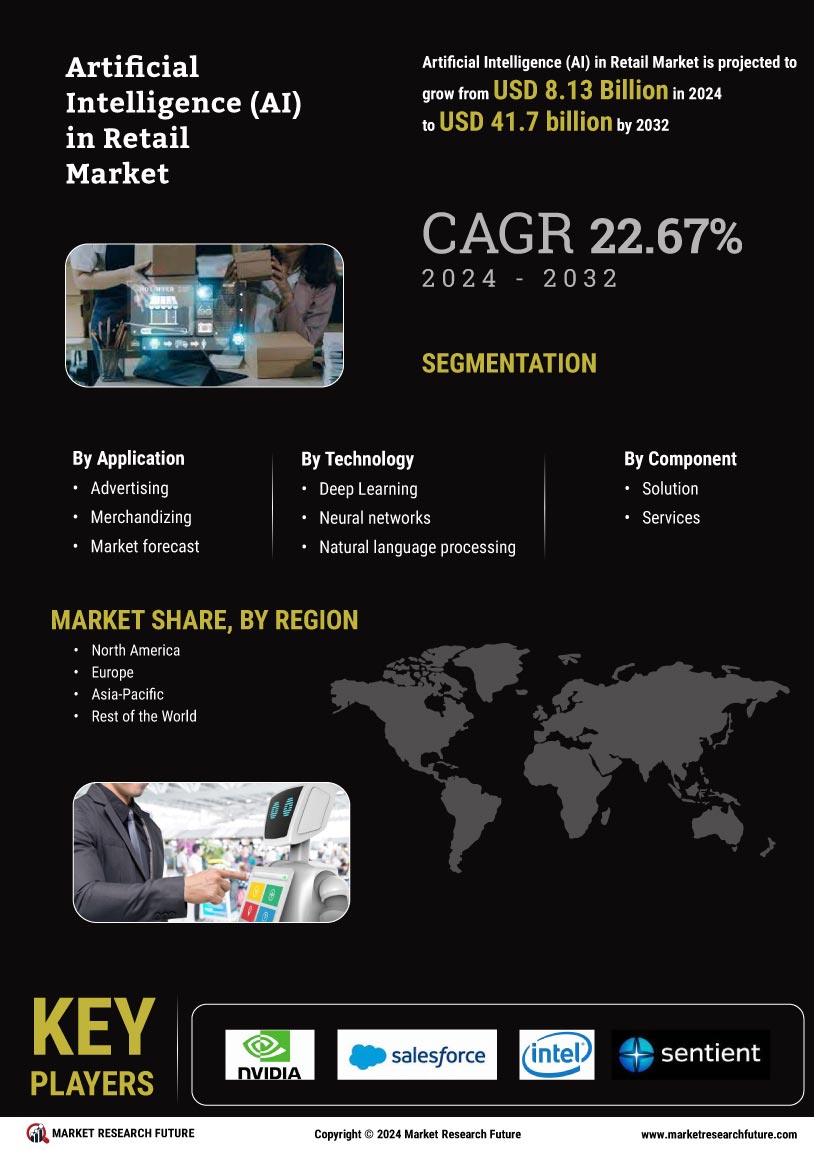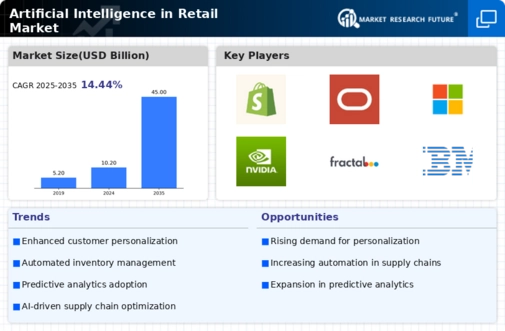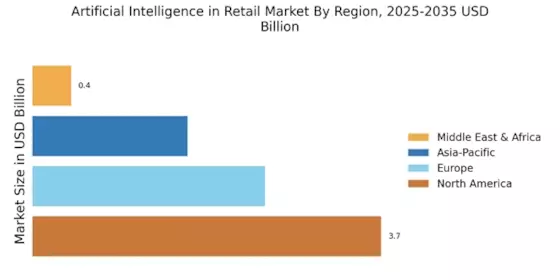Enhanced Customer Insights
The ability to gain enhanced customer insights is a crucial driver within the Artificial Intelligence in Retail Market. AI technologies enable retailers to analyze customer interactions across multiple channels, providing a comprehensive view of consumer behavior. This insight allows for more targeted marketing strategies and personalized shopping experiences. Retailers utilizing AI-driven insights have reported a 15% increase in customer retention rates. By understanding customer preferences and behaviors, businesses can tailor their offerings, thereby fostering loyalty and driving sales.
Data-Driven Decision Making
The integration of Artificial Intelligence in Retail Market facilitates data-driven decision making, allowing retailers to analyze vast amounts of consumer data. This capability enables businesses to identify trends, preferences, and purchasing behaviors with remarkable accuracy. For instance, predictive analytics can forecast demand, optimize inventory levels, and enhance pricing strategies. According to recent estimates, retailers leveraging AI-driven analytics have seen a 20% increase in operational efficiency. This trend underscores the importance of data in shaping retail strategies, as companies increasingly rely on AI to make informed decisions that align with consumer expectations.
Automation of Retail Operations
Automation stands as a pivotal driver in the Artificial Intelligence in Retail Market, streamlining various operational processes. Retailers are increasingly adopting AI technologies to automate tasks such as inventory management, order fulfillment, and customer service. This shift not only reduces labor costs but also enhances accuracy and speed. For example, AI-powered chatbots can handle customer inquiries 24/7, improving response times and customer satisfaction. Reports indicate that automation can lead to a 30% reduction in operational costs, making it a compelling reason for retailers to invest in AI solutions.
Improved Supply Chain Management
Improved supply chain management is increasingly recognized as a vital driver in the Artificial Intelligence in Retail Market. AI technologies facilitate real-time tracking of inventory and shipments, enabling retailers to respond swiftly to market changes. By employing machine learning algorithms, businesses can predict supply chain disruptions and optimize logistics. Studies suggest that retailers implementing AI in their supply chains can reduce costs by up to 25%. This efficiency not only enhances operational performance but also ensures that products are available when and where customers need them.
Personalized Marketing Strategies
Personalized marketing strategies represent a significant driver in the Artificial Intelligence in Retail Market. AI enables retailers to analyze customer data and segment audiences effectively, allowing for tailored marketing campaigns. By leveraging machine learning algorithms, businesses can deliver personalized recommendations and promotions that resonate with individual consumers. This approach has been shown to increase conversion rates by as much as 30%. As retailers continue to embrace AI-driven personalization, they are likely to see enhanced customer engagement and improved sales performance.


















Leave a Comment